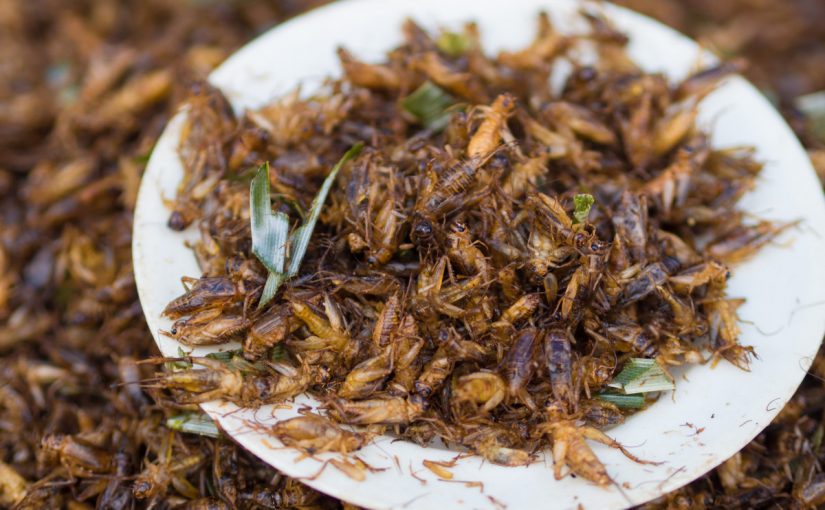There are thousands of species of edible insects. Many places worldwide have insects as part of their diet, and there is significant potential for edible insects to become much more popular in the US. They lack many of the issues plaguing cattle, creating significantly less greenhouse gas and runoff while simultaneously having much higher feed conversion rates. Additionally, they have many different flavors, and can be used to cook in a variety of ways. In this post, I will give a brief history of entomophagy (eating insects), as well as how they may be useful in solving many food security and climate change issues.
Humans have been eating insects for tens of thousands of years, and continue to today. Eating insects is mentioned in religious literature throughout Christian, Jewish, and Islamic faiths. In ancient Greece, Aristotle described eating cicada. Servants in the Middle East are thought to have carried locusts on sticks to royal banquets. Ancient Chinese literature mentions eating insects as well. It is very likely our ancestors ate insects, and many other primates are known to consume them. It’s kind of odd that we don’t eat insects in our society, especially when considering some of our other agricultural systems.
Insects are very nutrient dense, and have high levels of protein. They’re a good source of unsaturated fatty acids (higher than fish in omega 3), zinc, iron, and vitamin A.
Raising an insect is significantly more efficient than raising other cattle. When comparing feed conversion rates (how much feed per kg of weight gain), insects have a significant advantage. Crickets use 1.7kg of feed to gain 1kg of weight, compared to 2.5kg for chickens, 5kg for pigs, and 10kg for beef cattle. Additionally, they require much less water than cattle, and emit significantly fewer greenhouse gasses. Logistically, most everything is easier. Transportation, storage, or rearing facilities are not huge issues because there are less size restraints. Certainly, there are challenges. Insects need to be provided with cheap and accessible but also quality food sources, and if they intend to be for human consumption, the insect feed will likely need to be food grade as well. It is generally safe to eat insects, and their pathogens are generally different to those that antagonize us. In many ways, there is huge potential for us to subvert greenhouse gas release, deforestation, and water overuse through insects as a protein source.
The only reason we don’t eat insects is cultural, and many people are disgusted by the idea. This certainly creates a negative feedback loop, and when you think about it, it does make sense to consume insects. Perhaps actually eating insects would change minds, as they are apparently quite flavorful and palatable when cooked. Mealworms, crickets, and even wax moths can be quite tasty when prepared correctly. Mealworms apparently soak up flavors very well, and will taste buttery if sauteed in butter. There is definitely some experimentation to be done here, with different cooking methods and types of insects, however it seems very promising!
Me and Yerme have been talking about collaborating on an insect tasting lab, and I will be experimenting with cooking insects sometime during the quarter, which I am hopeful I can share with all of you.
